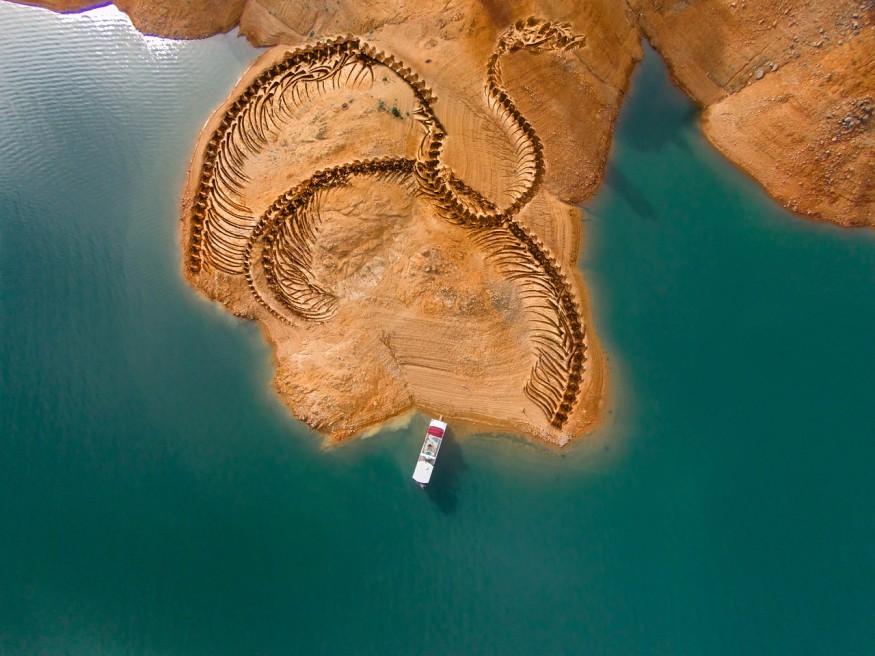The legendary Loch Ness monster has been the talk of the town since its first sighting and even more so when an alleged photograph of it was released in 1934. However, Nessie reportedly have a lesser-known rival from the North East that had also shocked dock workers in the 1800s when it suddenly appeared.
Researchers dig up the truth behind the mysterious monstrous creature that has remained a mystery for a long time and looked for reports about the beast that has hardly been bestowed similar notoriety to Nessie.

Lambton Worm: The Hartlepool Dock Monster
On Oct. 4, 1879, dock workers on the banks of the River Wear in Hartlepool, County Durham, reportedly discovered and hauled a sea monster that is now known as the Lambton Worm.
Tales of the sightings of this freakish creature have been shared and reported on the same day in the publication of the Northern Daily Mail. The report described it with a head of a cobra-like those huge serpents seen in mythological collections of sea monsters that sailors encountered in their their voyage.
The sea monster was brought to the Mail's office as journalists wanted to take a closer look at the animal for further inspection. According to Daily Star, it was 10 and a half feet long with a dark and brown slimy body.
The article with the headline, "Capture of a Sea Serpent at West Hartlepool," said that the head is somewhat elongated and flattened than the rest of the body and occasionally rears its head amid the coils formed by the body. The sea creature had never been seen before in Hartlepool.
It was sent to the local superintendent of the North East Railway Company named Mr. Bland for safekeeping. However, it was not documented and nobody knows why. It was only mentioned once more in a small paragraph jokingly announcing the marine creature's death.
What Animal Was Lambton Worm?
It is a shame that the animal was not taken seriously at that time, which leaves the unanswered question of what it was. According to Hartlepool Mail, the first thought was that it was a monster-sized eel. But then this was dismissed because eels were a common catch at the time, and local fishermen would be familiar with them, and eels can only grow up to 5 feet long.
On the other hand, there have been tales about a gigantic eel lurking in the docks that persisted until the late 70s that some locals still believe today.
Another candidate is an oarfish, a peculiar and elusive deep-sea creature that swims vertically and is only seen on the surface when it is ill or dying. Oarfish can grow up to 26 feet and are thought to be the culprit of many sea serpent sightings.
An earlier sea serpent sighting that occurred in Cullercoats in 1849 also made the headlines, but the description from the scientific men of Newcastle is different from what the Lambton worm is supposed to look like.
Then in July 1945, a sighting by the crew of The Black Eagle ship reported seeing a creature's head that was 6 feet above the waves and a back that was about 8 feet across. But like the Cullercoats creature, it was nothing like the Hartlepool dock monster. Until this day, no one exactly knows what kind of a marine animal is the Lambton worm.
While many considered the creature a legend, the locals in the villages of Washington in County Durham, where the giant worm allegedly terrorized were proud of it and sure of its historical existence. The consensus was it was a great eel with a "dragon's head."
Tom Murray, who has a two-part radio program on the subject broadcast on ABC Radio National's The History Listen concluded that the beast was a "rare monster indeed."
RELATED ARTICLE : Bizarre Loch Ness Monster Theory Suggests It Could Just Be a Whale's 'Snake-Like Penis'
Check out more news and information on Sea Monster in Science Times.
© 2026 ScienceTimes.com All rights reserved. Do not reproduce without permission. The window to the world of Science Times.











